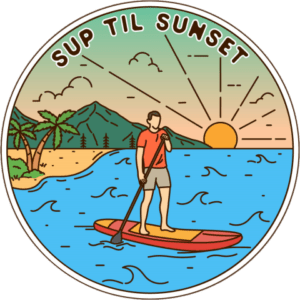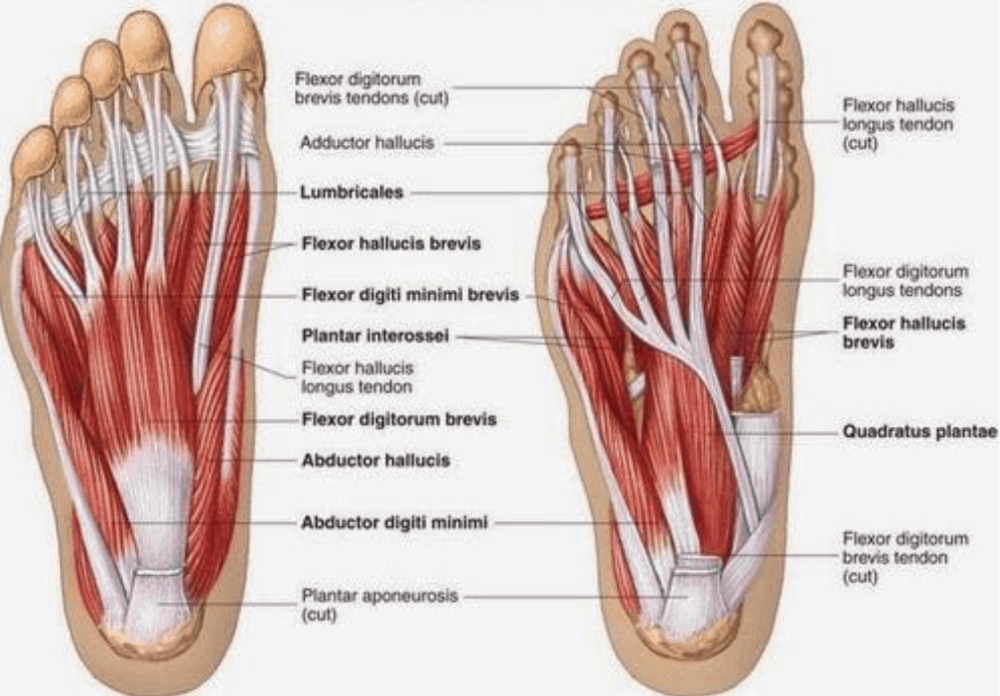For any of you who have ever tried paddleboarding you will be all too familiar with just how intense the activity can be.
You see people gliding along the water so peacefully with seemingly little exertion.
You then jump on the board yourself only to be sweaty, sore and out of breath in a matter of minutes.
Paddleboarding is fantastic exercise and actually stimulates a large number of muscles as well as does wonders for your cardiovascular fitness.
For those who have been paddleboarding before and woken up sore the next day, you may be feeling discomfort and tightness in places you never thought possible.
So with that being said just what muscles or muscle groups are used when paddleboarding?
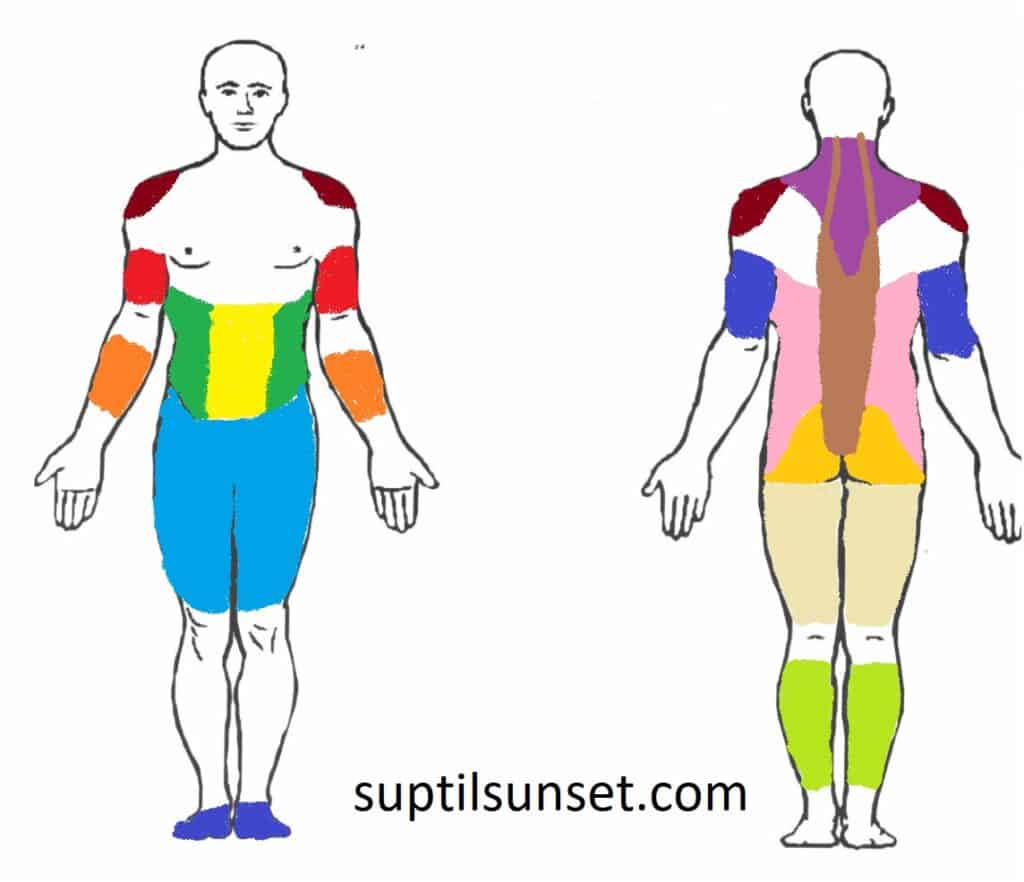
Paddleboarding uses a large number of muscles and muscle groups. The major muscles involved in paddleboarding are as follows:
- Biceps
- Triceps
- Forearm
- Deltoids
- Trapezius
- Erector Spinae
- Latissimus Dorsi
- Abdominals
- Obliques
- Glutes
- Quadriceps
- Hamstrings
- Calves
- Feet muscles
Some of the above noted muscles are extremely obvious as to how they would be worked or required when paddleboarding, however, some of them might surprise you.
In this article I am going to cover where each of these muscles is located and how and when they might be used when paddleboarding.
Understanding these different movements and more importantly the muscles used to create these movements is extremely advantageous to prevent injuries and also improve technique.
The way in which this improves technique is because if you notice muscles that aren’t noted above starting to hurt or stiffen up this may indicate that your technique needs a slight adjustment.
To keep this article better formatted I placed each muscle under the overarching body area/ part that they fall under.
Arms
This is certainly one of the more obvious areas regarding muscles that are used when paddleboarding.
Biceps
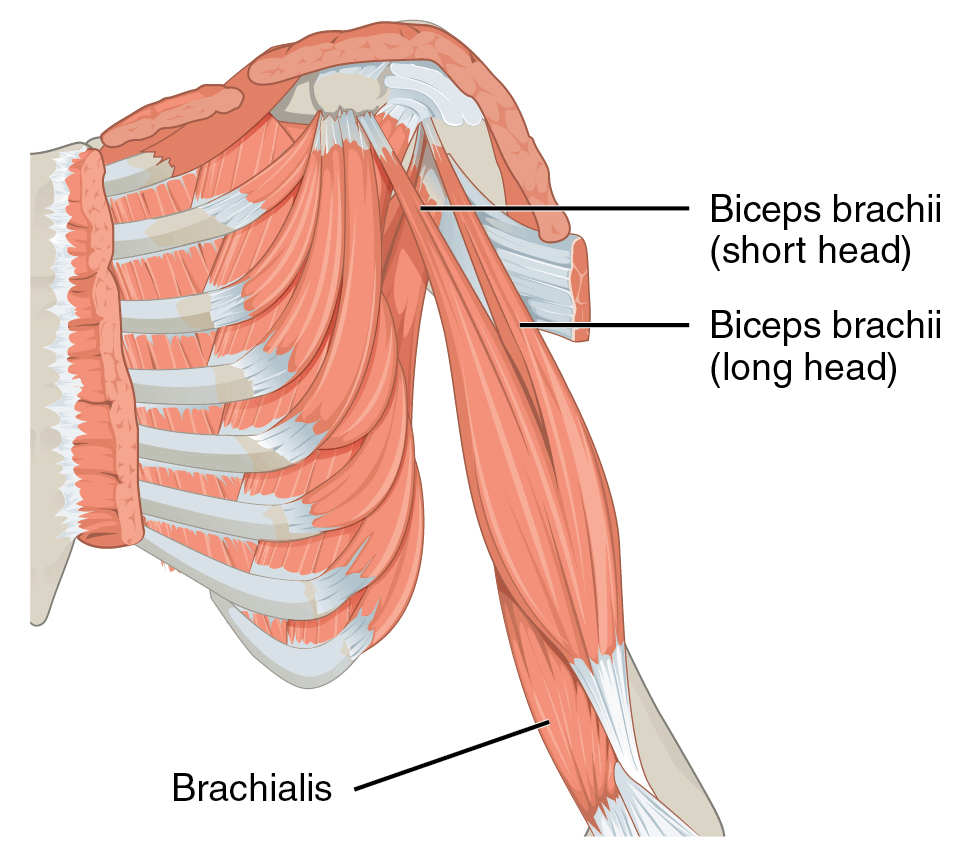
The first muscle used is the Biceps.
The Bicep, full name Musculus Biceps Brachii (Latin for Two Headed Muscle of the arm)
The Biceps are located in the front section of the arm between the shoulder and the elbow.
The role of the Bicep is to bend the forearm towards the upper arm/ shoulder.
When paddleboarding this muscle is often used when taking the paddle out of the water after completing a stroke to allow the paddle to be extended and placed back in the water for the next stroke.
The Bicep is also used to draw the paddle towards the body when stroking.
The Bicep plays other minor roles when paddleboarding however the majority of the motion will be relating to lifting and stroking.
Triceps
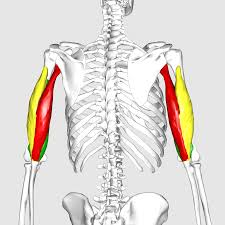
The Tricep is the next muscle commonly used when paddleboarding.
The Tricep, full name Triceps Brachii (Latin for Three Headed Muscle of the Arm)
The Tricep is located in the rear of the arm between the shoulder and elbow.
The role of the Tricep is to extend/ straighten the forearm, this is used in conjunction with the Biceps when paddling.
The Triceps and Biceps are an antagonistic muscle pair.
This means they work in pairs, when the Bicep is shrinking/ contracting the Tricep is relaxing/ lengthening and vice versa.
Forearm Muscles
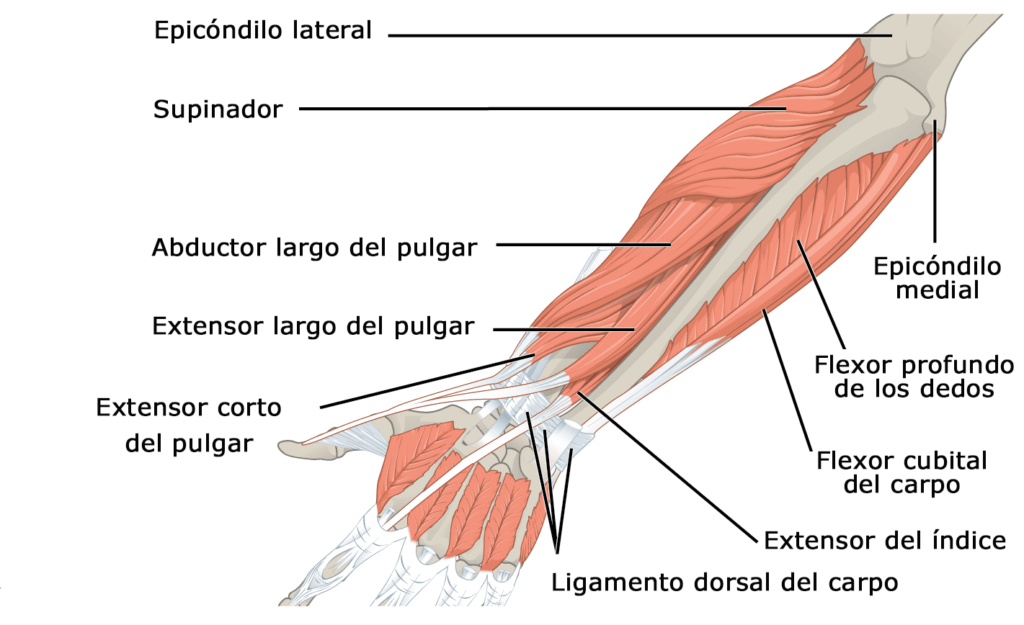
Muscles that are often used in paddleboarding but very rarely mentioned are the forearm muscles.
These muscles are mainly used when gripping the paddle.
The three main muscles used when gripping are the Flexor Digitorum Suprerficialis, Flexor Digitroum Profondus and the Flexor Policus Longus.
These muscles start up in the elbow and upper portions of the forearm bones and run down the arm to the thumb.
If you want to see how these muscles are activated you can do simply by placing your arm out in front of you and clenching your fist.
Shoulders
Now we have covered the arms we can move onto the shoulders.
Now admittedly the Trapezius covers the neck also however I felt it was neater to keep them tied into the shoulders sections as they cover this area too.
Deltoids
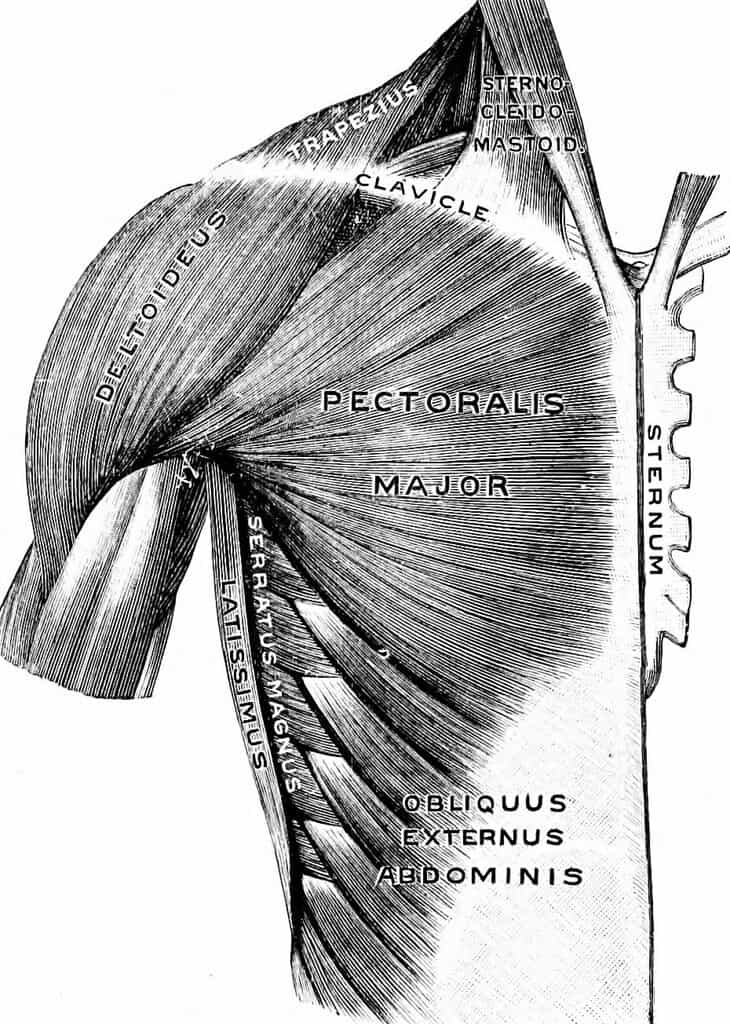
The Deltoid is a thick triangular muscle that covers the shoulder. The Deltoid is responsible for giving the shoulder its rounded contour.
The Deltoid sometimes referred to as the ‘common shoulder muscle’ is responsible for raising the arm away from the body, this often happens when paddleboarding as the paddle is lifted out of the water and then placed back in during the finish and start of the stroke process.
Trapezius

The Trapezius is a large pair of flat muscles that run from shoulder to shoulder and from the top of the neck to lower thoracic vertebrae of the spine.
The role of the Trapezius is to stabilise and move the scapula.
The Trapezius elevates and rotates the scapula to allow the arm to raise and the shoulder to rotate when paddling on a paddleboard.
Back
The next area that is thoroughly put through its paces when paddleboarding is the back.
Erector Spinae
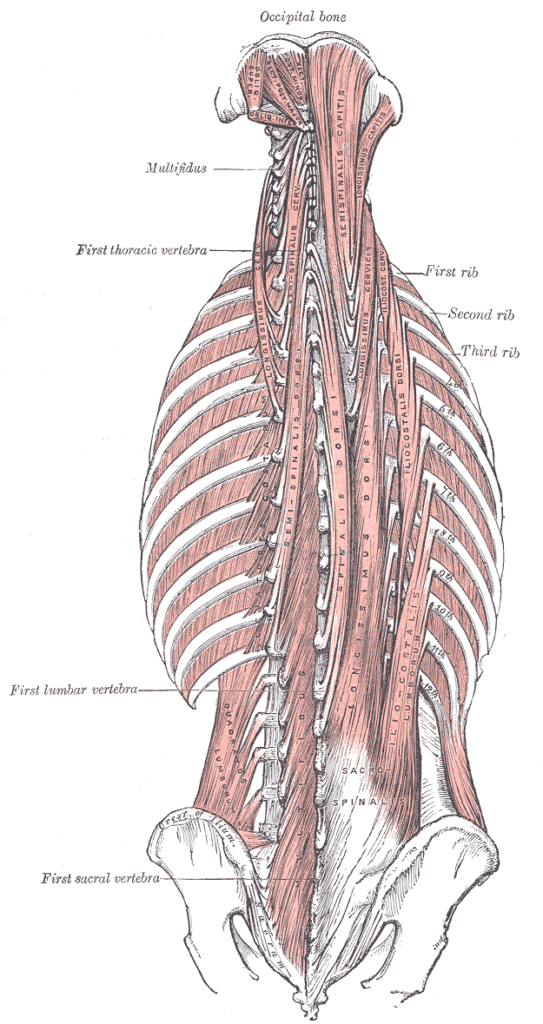
This is a muscle that most of you probably aren’t too familiar with but based on the name I’m sure you can pinpoint exactly where this muscle is.
Yep, you guessed it the Erector Spinae is a muscle or rather group of muscles that run along and essentially throughout the spinal cord and vertebrae./
Your Erector Spinae is responsible for straightening and rotating the back as required.
This is particularly useful when paddleboarding as it allows us to extend our back and stretch into the start of our stroke.
As we stroke with the paddle we are able to rotate our body and specifically from our back to gain extra momentum through our paddle and take some strain off of our arms and shoulders.
Latissimus Dorsi
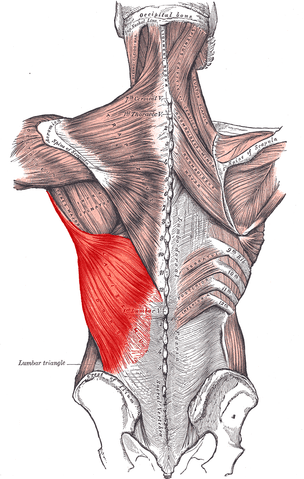
The Latissimus Dorsi which when translated reads ‘broadest muscle of the back’ is as the name suggests the largest muscle in the whole of the upper body and for good reason as it has a lot of jobs.
The Latissimus Dorsi, roughly triangular in shape and runs from the armpit, to the centre of the spinal cord and all the way down to the bottom of the back near the pelvis.
Its job includes all of the following movements:
- Extension
- Adduction
- Transverse Extension
- Flexion from Extended position
- Internal rotation of the shoulder joint
As you can this Muscle is large for good reason as it has quite a laundry list of jobs.
The Latissimus Dorsi is used for multiple actions in paddleboarding including pulling the paddle through the water, rotating the shoulder to move the paddle as required to name just a few.
Core
One of the most important but undervalued areas in nearly all sports, not just paddleboarding.
I could quite literally write an essay on why and how the core is so vital to so many sports but I don’t want to bore you with the details so I will just crack on with the task at hand.
Abdominals
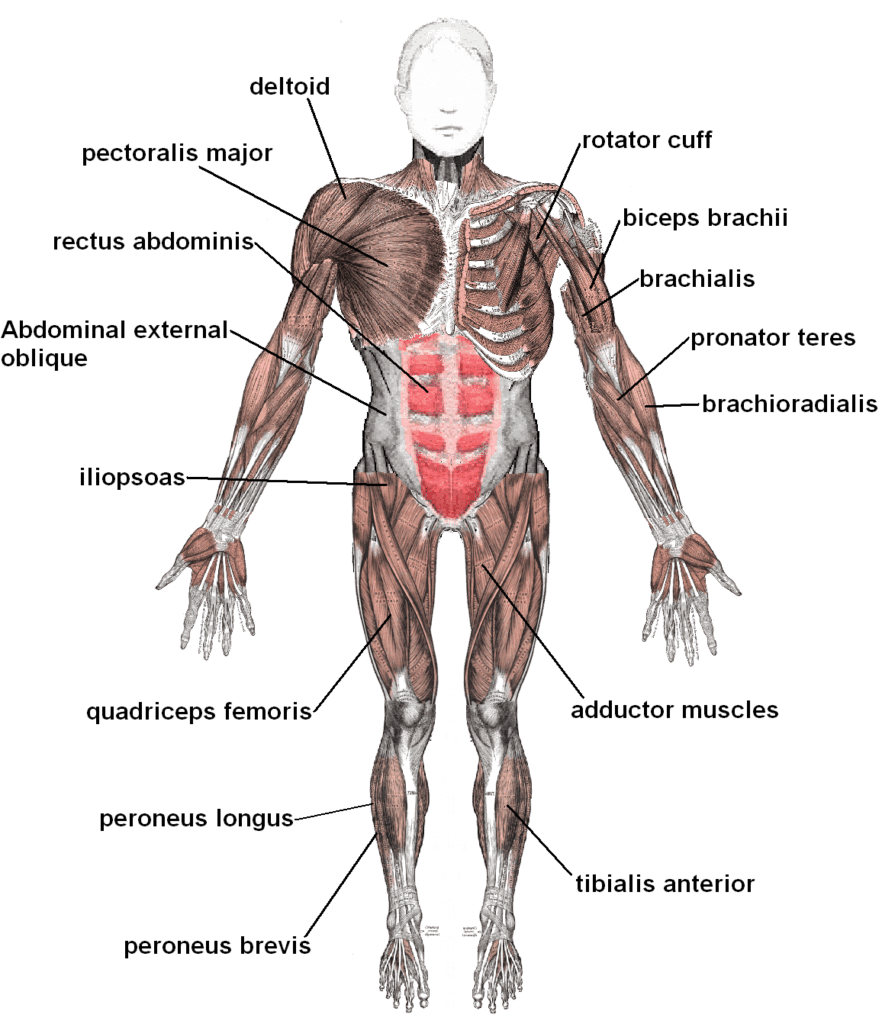
One key component of the core is the abdominal muscles, I’m not sure I need to explain where they are located but just in case you are somehow unaware.
The abdominals are located in the stomach between the rib cage and pelvis and if you have a low enough body fat percentage will show themselves in the form of a 6 pack or occasionally an 8 pack if your lower abs are uncharacteristically defined.
There is actually far more to the abdominals than just a 6 pack though.
The Abdominals are a group of muscles which at their core are designed to support movement and protect internal organs.
The deeper abdominal muscles make up the core which when coupled with other muscles helps the body stay balanced and protects the spine.
Being able to balance is obviously very advantageous when it comes to paddleboarding.
As you fight to keep your balance on the rocking board whilst trying to move around to paddle your core will be working double time to help you stay upright and on your feet.
Obliques
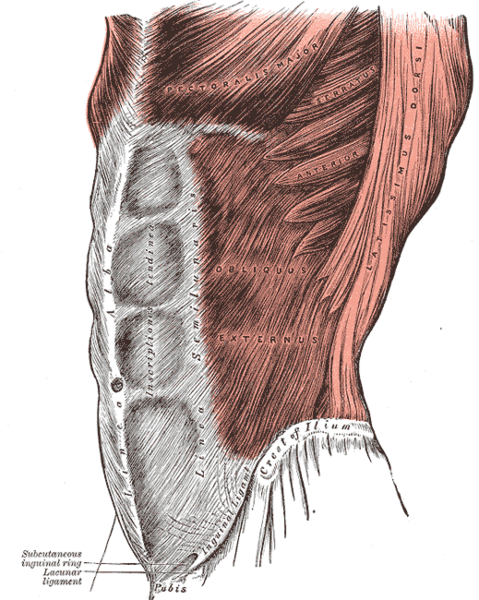
The obliques are composed of two muscles, the internal obliques and the external obliques and they are located to the side of your abdominal muscles and run from your hips to the rib cage.
They are responsible for rotating and twisting the trunk of the body.
Again this is useful when twisting or rotating either to perform a stroke or to switch which side you are paddling from to stop you turning round in a circle.
Buttocks
The buttocks actually play a big role in lots of sports or at least the muscles do.
Glutes
The glutes are a group of 3 muscles, these being the gluteus maximus, gluteus medius, and the gluteus minimus.
For those who appreciate a nice butt be it male or female we have the Gluteus Maximus to thank for that as this is the muscle that forms the shape of the butt.
Now although they make for a nice view this isn’t their primary function.
The Glutes are actually responsible for Extending, Abducting and assisting with rotation of the hip joint. This group of muscles is activated a lot more than you might think when you are paddleboarding.
Every time the board is wobbling and ultimately so are your legs and hips it is likely your glutes are activated to keep help the hip move with the motions.
The Glutes also assist with further knee extension if required.
I have actually experienced both lower back pain and a knee pain due poor glutes.
Legs
The leg muscles obviously play a huge part in stand up paddleboarding.
Now that isn’t to say that you can paddleboard from a sitting or even kneeling position.
But in the traditional sense of paddleboarding the legs play a huge part.
Quadriceps
The Quadriceps as the term quad might suggest is actually not one large muscle but instead a collection of 4 smaller muscles that all work in unison.
The 4 muscles that make up the Quadriceps are as follows:
- Rectus Femoris
- Vastus Lateralis
- Vastus Medialis
- Vastus Intermedius

The Quadricep for those of you who don’t know is located in the front top half of the leg. The muscle makes up your thigh.
The role of the quadriceps is to extend the lower portion of the leg through the knee joint.
The Quadriceps also used to flex the hip so it is vital for squatting activities even slight squatting like when balancing on a paddleboard.
The Vastus Medialis also plays a huge role in stabilising the Patella in the knee which of course is great for balance as well as injury prevention.
Hamstrings
The Hamstring is not one singular muscle but instead a collection of smaller muscles.
To be precise it consists of 3 muscles.
- Semitendinosus
- Semimembranosus.
- Biceps femoris.

The hamstring is located in the rear of the leg above the knee and below the pelvis.
The hamstring is responsible for extending the thigh and also flexing the knee.
Much like the Bicep and Tricep the Hamstring and Quadricep are antagonistic muscles.
When the Quadricep is contracting the Hamstring is relaxing and vice versa.
When on a paddleboard where the constant ripples of the water and crest of the waves changes your standing position, both the hamstrings and quadriceps will be working in unison to keep you upright and balanced.
Calves
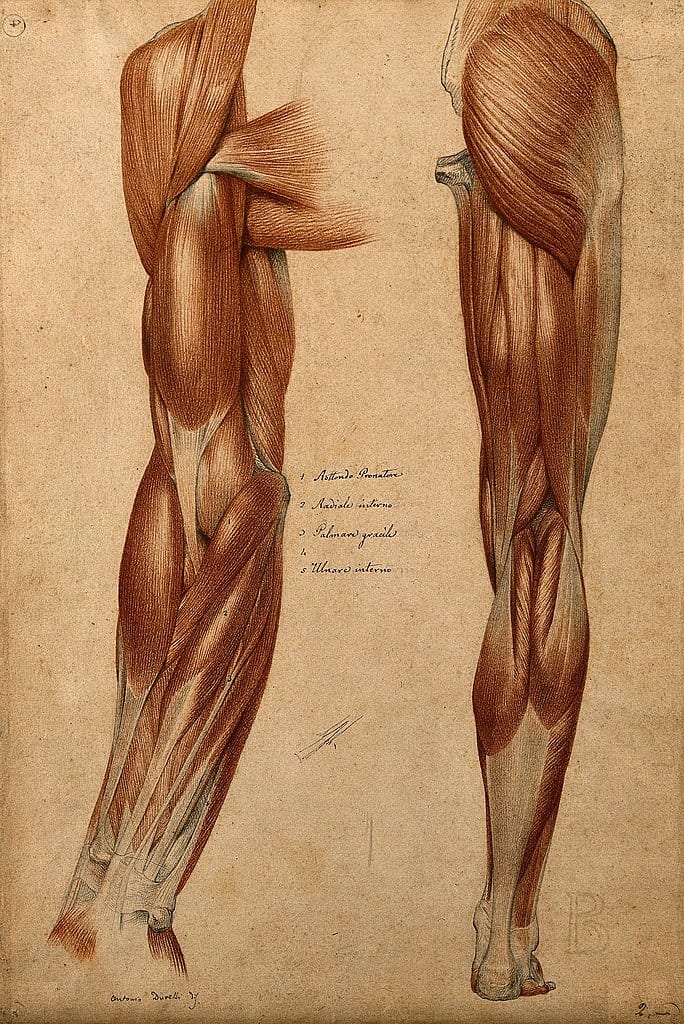
The Calf again as with most of the above muscles is not one singular muscle but instead is two separate muscles that collectively are known as the calf muscle.
The two muscles that make up the calf are as follows:
- The gastrocnemius
- The Soleus
The Gastrocnemius is the larger of the two and has two heads which create the diamond shape that you can see visible through the skin when a person’s calf is well defined.
The Soleus is the smaller muscle of the two and lies below the Gastrocnemius.
The two muscles work together to act as one and are responsible for pulling the heel upwards.
When balancing on a paddleboard it is more beneficial to be slightly on your toes rather than planted on your heels.
This allows micro adjustments to take place to keep better balance.
By remaining slightly on your toes rather than the balls of your feet this also keeps you calves working throughout your paddle.
Feet
Now you may have seen this category at the top and thought to yourself that feet aren’t a muscle and well, you are absolutely correct they aren’t.
The actual muscles involved in this are the muscles that run in the arch of the foot.
Feet Muscles
Now I couldn’t be further from a foot specialist so I am not even going to attempt how exactly each of these muscles behave because there are 10..
Yes 10 different muscles in the sole of your foot that all collectively work together to help you stay balanced when planting your foot. Each of these muscles works by handling micro movements in the digits of your feet to help you remain balanced.
A good example of these muscles working on your behalf is when walking in shoes such as flip flops.
You will notice when wearing flip flops your toes automatically clench and adjust as you walk to ensure the flip flop remains on.
This is the same process that happens when out paddling.
Your feet muscles are constantly tightening, relaxing and adjusting to ensure you stay balanced and don’t slip or lose your footing.
How To Avoid Injury When Paddleboarding.
So I expect you didn’t realise quite how many muscles were involved in paddleboarding.
Now you have some idea of just how intricate and intelligent our bodies are. It is important to remember that each of our muscles is like a cog in a machine.
If one cog becomes stiff or worse damaged the machine ceases to work or drastically decreases in performance.
It is vital that each of these muscles remains in good working order if you want to keep paddleboarding.
That is why I would like to take this opportunity to remind you that warming up before paddleboarding is extremely important.
You never realise how much pulling one of those muscles in your feet can impact you until it happens.
